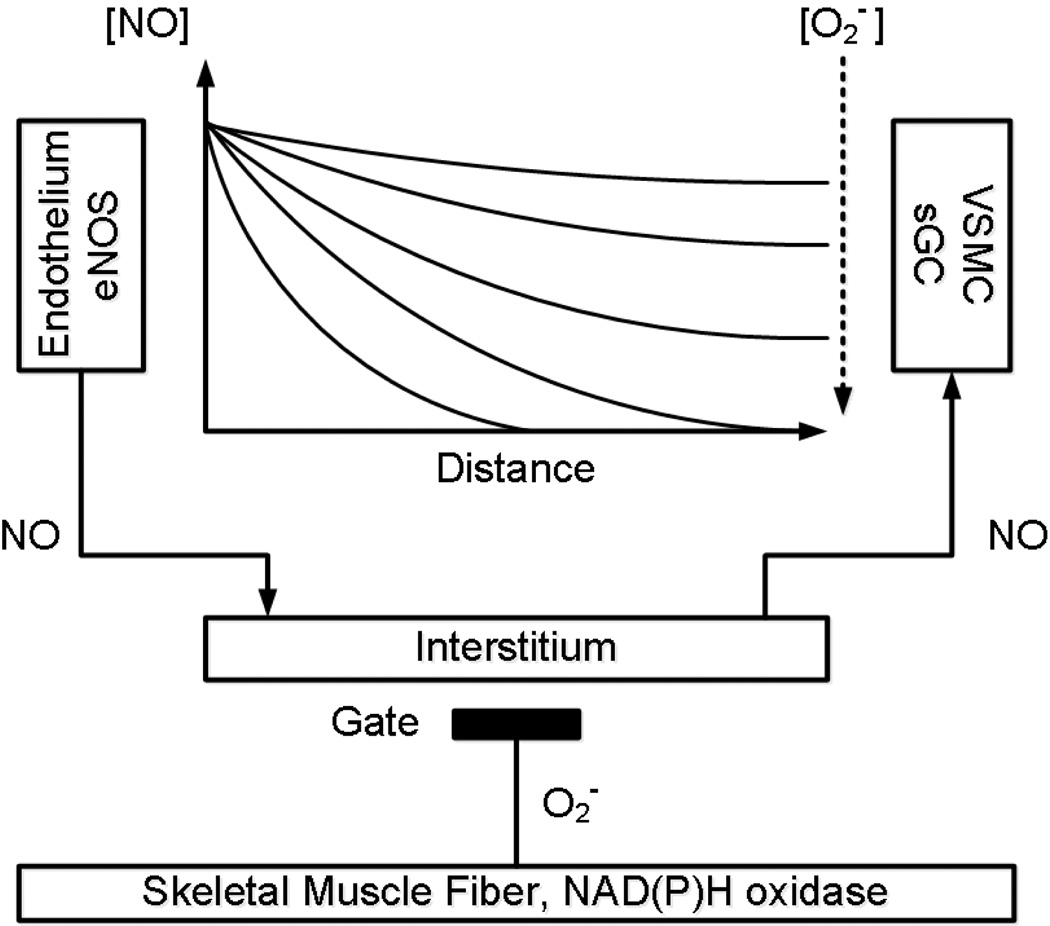Figure 3.
The flux of nitric oxide, continuously produced by microvascular endothelial cells, is transported by diffusion to smooth muscle cells in the walls of arterioles. The interstitial concentration and distance of NO propagation depends on the presence of superoxide injected into the extracellular space by NAD(P)H oxidase. Thus the interstitial space represents a chemical gate, which controls the NO flux to the smooth muscle cells of arterioles via emission of superoxide mainly by parenchymal cells. Graphically, this process can be presented as a kind of transistor where the source is endothelial eNOS, the drain is sGC of the VSMCs and the interstitium is a gate controlled by the concentration of superoxide. Similarly, the flow of superoxide to ecSOD is modulated by NO concentration in the interstitium, and the interstitium also can be represented as a gate for superoxide, controlled by the interstitial concentration of NO. This concept is based on the results of mathematical modeling for the propagation of NO and superoxide in a diffusion/reaction system (37, 40, 158).

